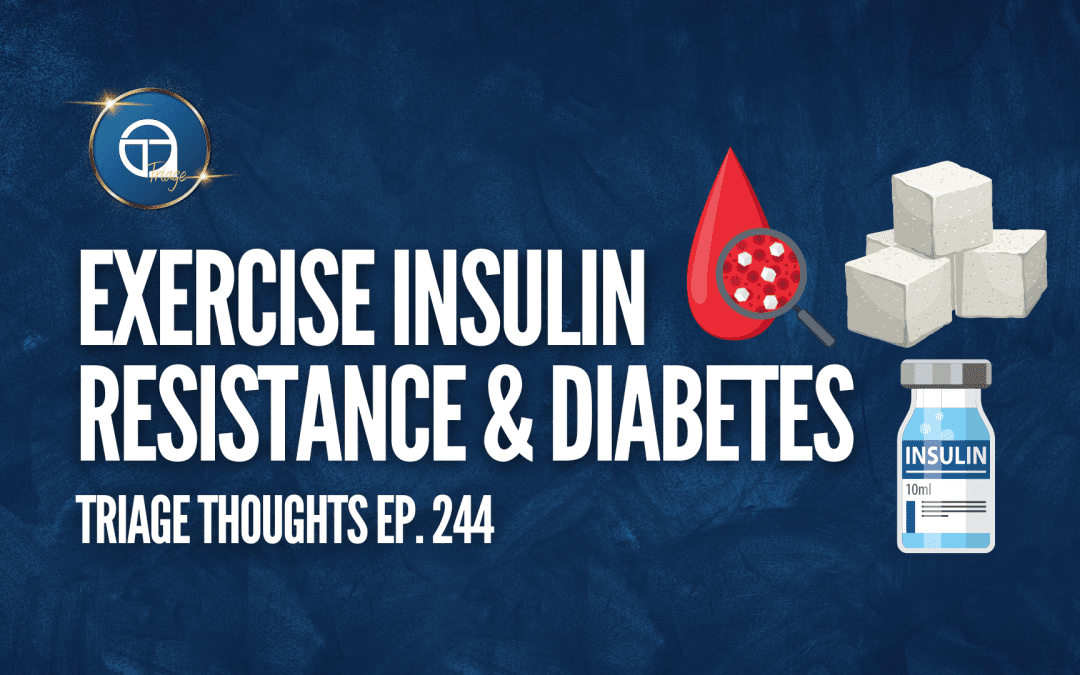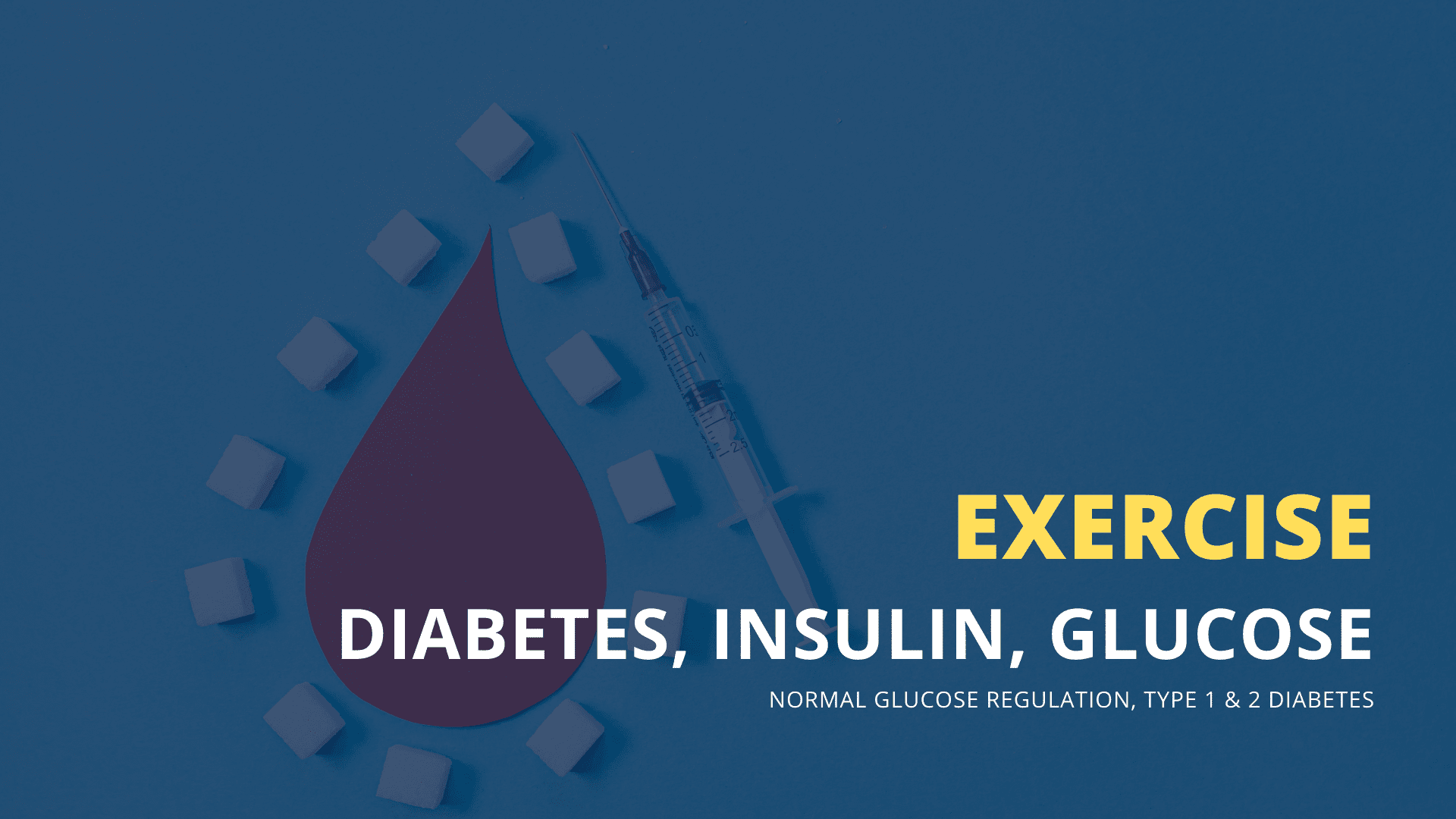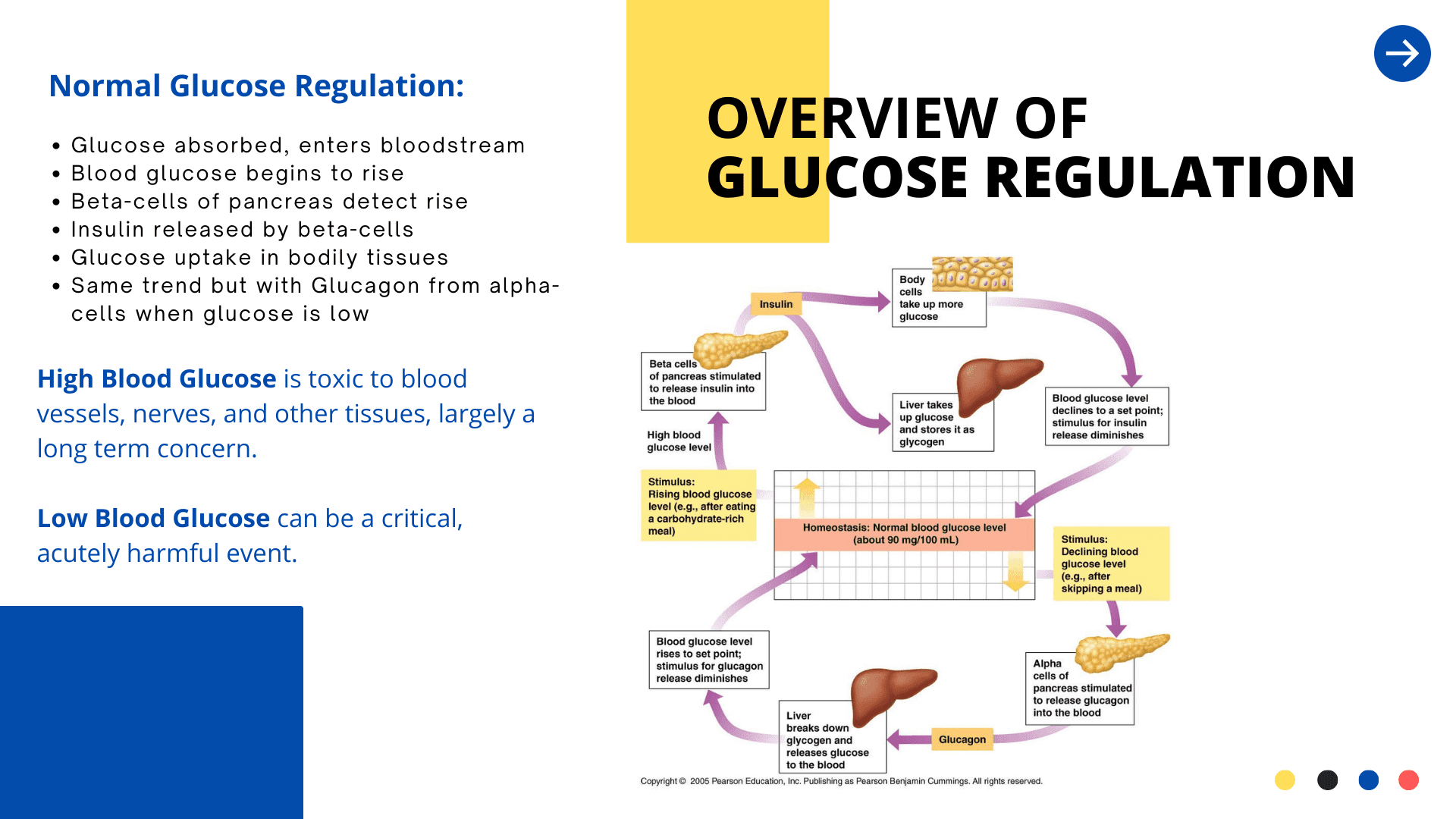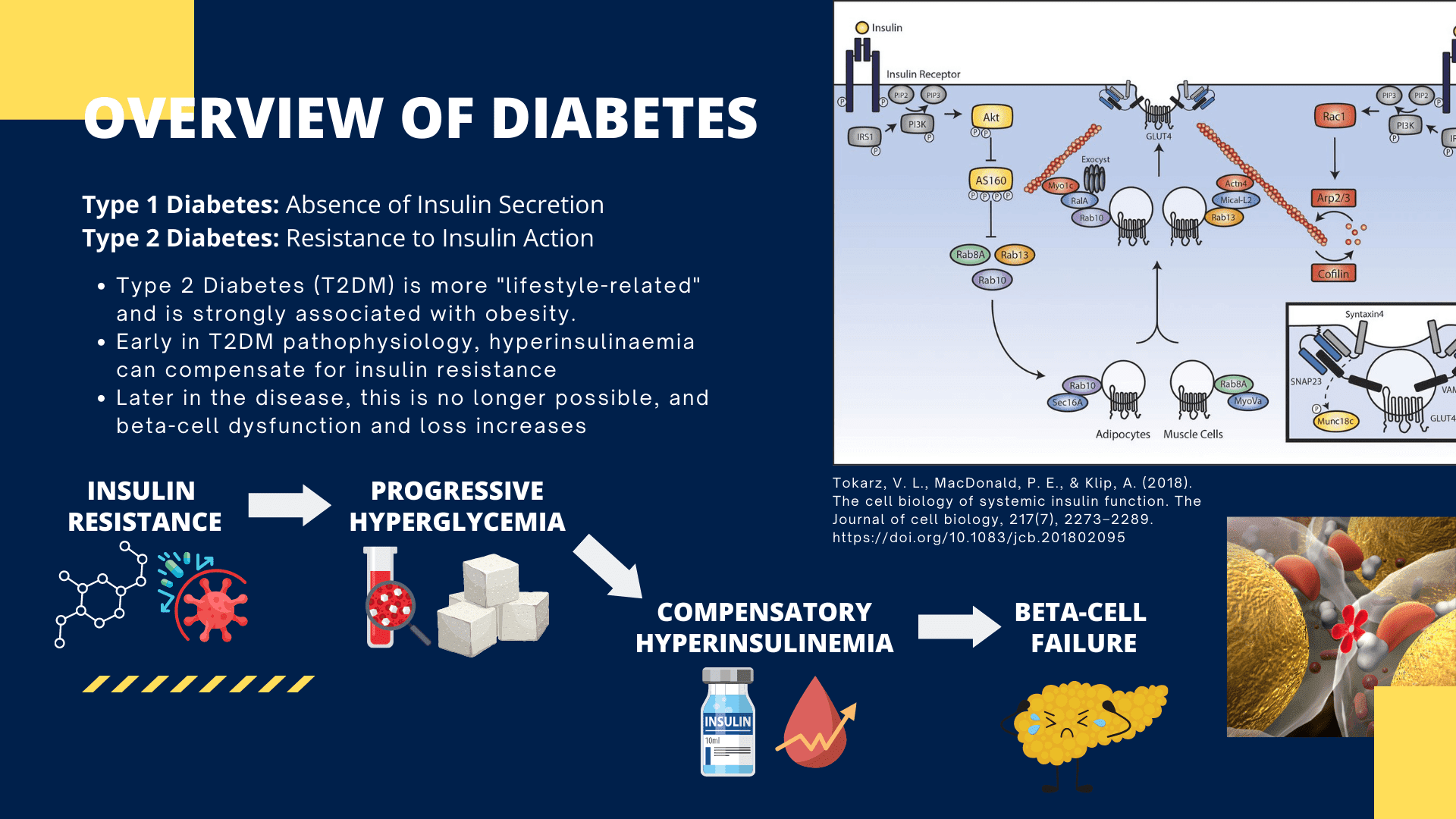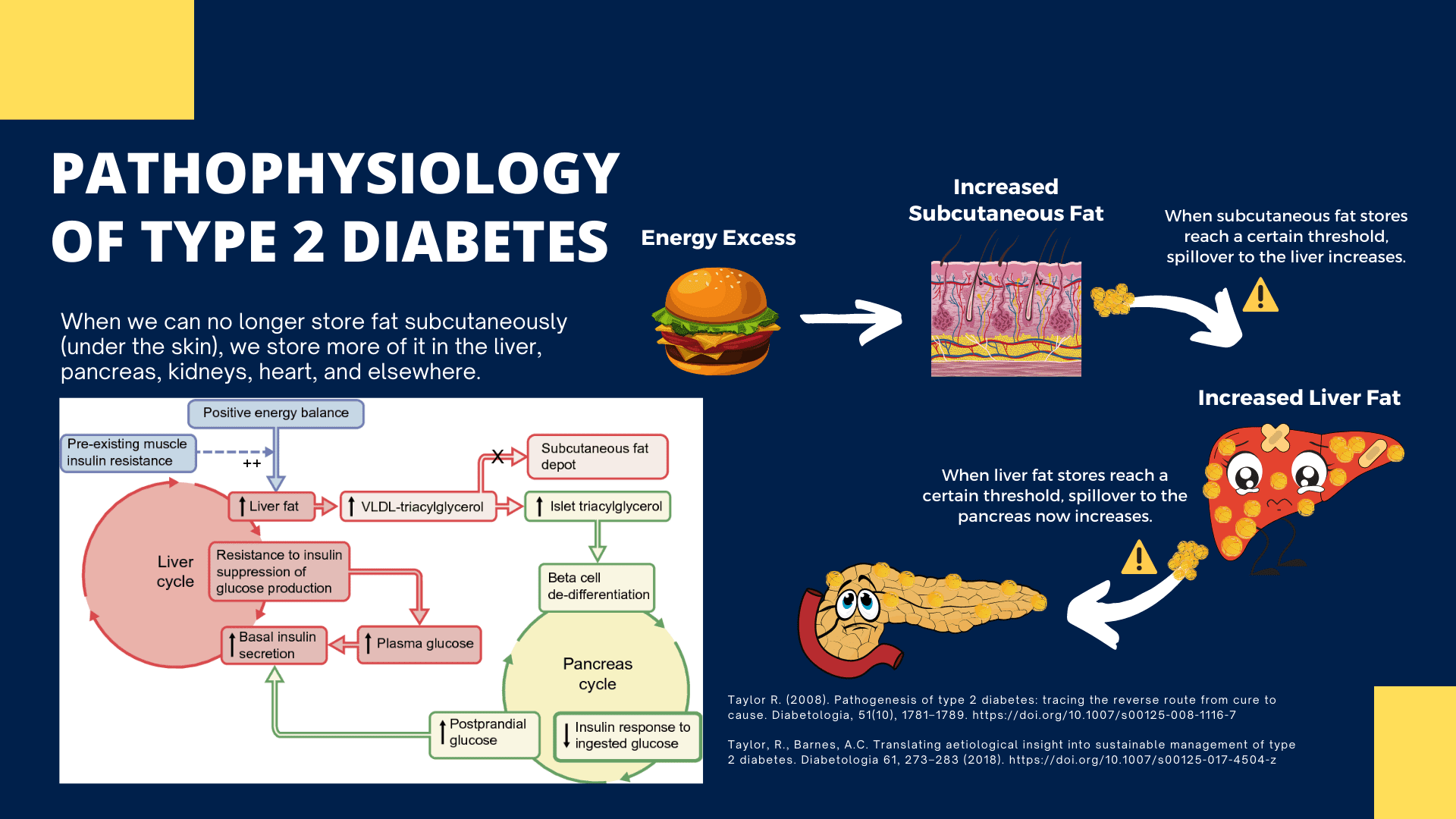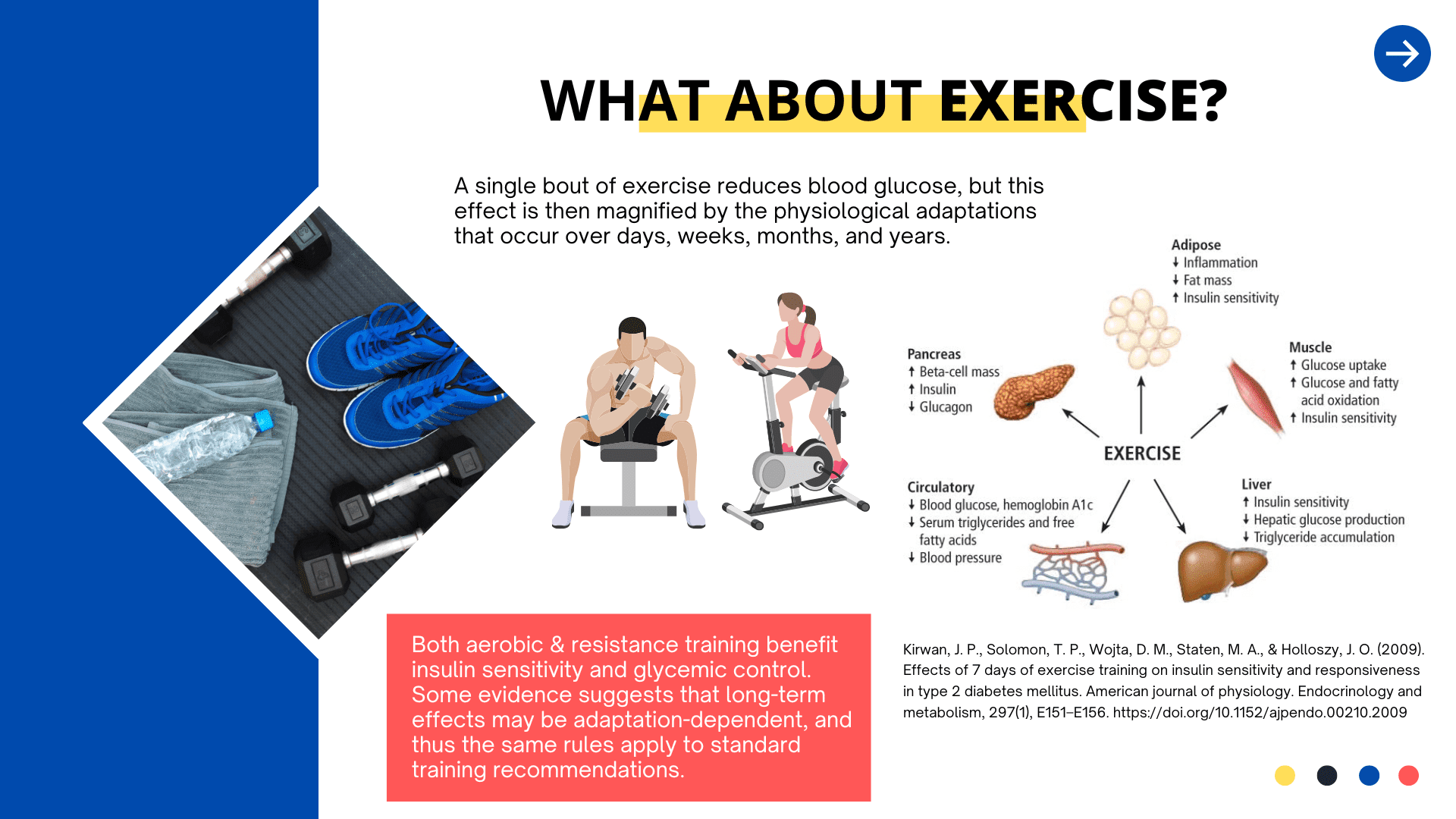In this episode of the podcast, we discuss the role of exercise in blood glucose regulation. This is of relevance to healthy populations, but of most importance to diabetics. Exercise is one of the most potent glucose-lowering interventions available, and should be used regularly.
Podcast Notes
Introduction to Glucose Regulation
In a state of normal physiology, the following primary events enable the maintenance of normal blood glucose:
- Glucose absorbed, enters bloodstream
- Blood glucose begins to rise
- Beta-cells of pancreas detect rise
- Insulin released by beta-cells
- Glucose uptake in bodily tissues
- Same trend but with Glucagon from alpha-cells when glucose is low
⬆️ High Blood Glucose is toxic to blood vessels, nerves, and other tissues, largely a long term concern.
⬇️ Low Blood Glucose can be a critical, acutely harmful event.
Overview of Diabetes
1️⃣ Type 1 Diabetes: Absence of Insulin Secretion
2️⃣ Type 2 Diabetes: Resistance to Insulin Action
- Type 2 Diabetes (T2DM) is more “lifestyle-related” and is strongly associated with obesity.
- Early in T2DM pathophysiology, hyperinsulinaemia can compensate for insulin resistance.
- Later in the disease, this is no longer possible, and beta-cell dysfunction and loss increases.
🔑 When we can no longer store fat subcutaneously (under the skin), we store more of it in the liver, pancreas, kidneys, heart, and elsewhere.
- When subcutaneous fat stores reach a certain threshold, spillover to the liver increases.
- When liver fat stores reach a certain threshold, spillover to the pancreas now increases.
- Remission of T2DM occurs in response to loss of liver & pancreatic fat, enabling restoration of beta-cell function.
What About Exercise?
A single bout of exercise reduces blood glucose, but this effect is then magnified by the physiological adaptations that occur over days, weeks, months, and years.
Both aerobic & resistance training benefit insulin sensitivity and glycemic control. Some evidence suggests that long-term effects may be adaptation-dependent, and thus the same rules apply to standard training recommendations.
References & Further Reading
Kirwan, J. P., Solomon, T. P., Wojta, D. M., Staten, M. A., & Holloszy, J. O. (2009). Effects of 7 days of exercise training on insulin sensitivity and responsiveness in type 2 diabetes mellitus. American journal of physiology. Endocrinology and metabolism, 297(1), E151–E156.
Taylor R. (2008). Pathogenesis of type 2 diabetes: tracing the reverse route from cure to cause. Diabetologia, 51(10), 1781–1789. https://doi.org/10.1007/s00125-008-1116-7
Taylor, R., Barnes, A.C. Translating aetiological insight into sustainable management of type 2 diabetes. Diabetologia 61, 273–283 (2018). https://doi.org/10.1007/s00125-017-4504-z
Tokarz, V. L., MacDonald, P. E., & Klip, A. (2018). The cell biology of systemic insulin function. The Journal of cell biology, 217(7), 2273–2289. https://doi.org/10.1083/jcb.201802095
More From Triage…
Join the Email List
forms.aweber.com/form/77/857616677.htm
Interested in coaching with Triage?
Email info@TriageMethod.com and the Triage Team will get back to you!
Or you can read more and fill in a contact form at triagemethod.com/online-coaching/
Interested in getting certified as a Nutrition Coach?
Check out our course here: triagemethod.com/nutrition-certificate/
Have you followed us on social media?
Youtube: www.youtube.com/channel/UCzYO5nzz50kOAxo6BOvJ_sQ
Instagram: www.instagram.com/triagemethod/
Facebook: www.facebook.com/triagemethod/

